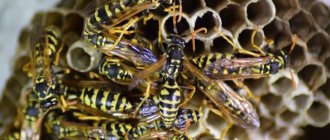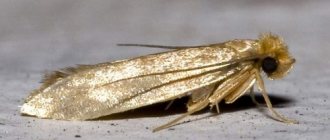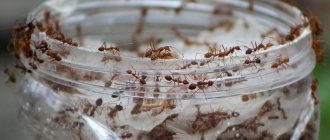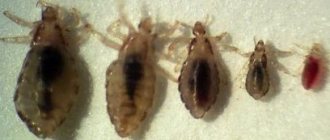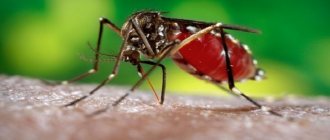Storage containers
Many people do not know whether it is possible to store dried fruits in plastic or cloth containers. In fact, this is contraindicated. Fabric bags allow air to pass through, so the product may become damp, and plastic will fill it with its unpleasant odor. It is not advisable to store dried apricots and raisins in plastic bags at home, since there is a high probability of mold formation. Metal containers are not suitable due to oxidation.
The best container for storing dried fruits at home is glass. Take a jar, choose a tight lid for it and fill it with dried apricots. The jar will preserve the smell, taste and beneficial properties of the product. Boxes made of wood or cardboard can also be used to store dried apricots (for no more than a month), but glass is preferable. Provided that the ceramic container closes tightly, you can also place dried fruits in it.
If you want to freeze dried apricots, place them in food foil. Freezing bags are also suitable, which will protect the product from being filled with foreign odors.
Note! When storing dried fruits in glass jars, close them with silicone or polyethylene lids, which, unlike tin and metal ones, will not create an unpleasant odor inside the container.
Features of storing various dried fruits
There are several ways to store dried fruits at home. When deciding on the optimal location, you need to take into account not only your own preferences, but also the features of a particular product.
Valid options:
- pantry. In a dark room, the temperature in which varies from 18 to 25°C, most dried fruits can last from 3 to 8 months. To prevent fruits from spoiling ahead of schedule, they must be properly prepared;
- fridge. At temperatures from 2 to 4°C, dried fruits will last a little longer - up to a year. If this option is selected, the food must be placed in a glass or plastic container. To preserve the taste and beneficial properties, the fruits must be ventilated every week;
- freezer. When deep frozen, products retain maximum benefits and can last up to 18 months. With this method, it is recommended to pack fruits or berries into small portions and store them in plastic bags or plastic containers. If defrosting has been carried out, re-freezing is not carried out.
It is worth considering that each type of dried fruit has its own nuances and storage features:
- dried apricots. It is better to keep the product at a temperature of about 15°C or in the freezer. If the first option is chosen, the fruits need to be packaged in small bags so that when mold appears, all supplies do not spoil;
- prunes. This delicacy is best kept at room temperature or in the refrigerator. Paper bags, glass or ceramic jars are suitable as containers. Prunes do not tolerate frost well;
- raisin. The most suitable temperature for storage is 17°C. It is recommended to store raisins in the pantry and not in the kitchen, since the fruits quickly deteriorate from high temperatures and high humidity. At home, raisins remain for no more than two months;
- dried apples . The most suitable place for this product is a balcony, temperature is about 10°C. The humidity in the room should be low, and constant air circulation is also important for dried apples.
Rules for storing dried dried apricots at home
Don’t listen to those who say that dried apricots cannot be stored in the refrigerator. In fact, for dried apricots, this place is quite real if you follow certain rules. With the right approach, dried apricots can even be frozen. Dried fruits will be stored in the refrigerator or freezer for a long time if you choose the right packaging and observe the temperature conditions.
Shelf life of dried fruits:
- stored in air indoors for 1 month;
- in a dark, cool place – six months;
- Dried apricots are kept in the refrigerator for 10 months;
- The product can be stored in the freezer for a year and a half.
In the event that you have too much drying material and it simply won’t fit in the refrigerator, you can put it in the pantry or attic, if you live in your own home and have such an opportunity.
In an apartment, dried fruits can be placed in a dark place, for example, under a closet or bed, and filled containers can also be taken out onto the balcony. Dried apricots also do well in a tightly closed cabinet.
Please note that the dryer should be located as far as possible from the heating system and gas stove. The storage temperature should not exceed +15 degrees. Air humidity indicators must be kept within 71%. If the increase in these indicators is short-term, then this is not dangerous for dried apricots, which will be eaten in the near future.
Advice! Keep dried apricots away from sources of moisture.
The benefits of dried fruits
During the drying process, moisture evaporates from the fruit, but beneficial substances are retained. All fruits retain microelements, fructose and plant fibers almost completely. They are very rich in fiber, which improves metabolism. You can use all fruits and berries, and dried fruits are much healthier than frozen ones.
Regular consumption of dried fruits stimulates the immune system, increases resistance to colds, and improves the condition of the skin and hair. Eating dry fruits daily rids the body of toxins. Another advantage of dried fruits is that they replace confectionery and sweets. This is very important for people on a diet.
The basic human diet contains fruits such as prunes, dried apricots, dates, raisins, cherries, apples and pears. They contain certain vitamins and minerals. They are united by the presence of potassium, large amounts of iron, and vitamins. Eating any of the dried fruits normalizes blood pressure, improves blood formation , and has a positive effect on the cardiovascular system, kidneys and thyroid gland.
But in order for dried fruits to bring only benefits, you need to choose the right ready-made products or dry them yourself.
Rules for storing prunes indoors
Among other types of dried fruits, prunes are the most undemanding in terms of storage conditions. The main thing is that the room is cool, dark and has a low humidity level. There are other recommendations, which we will discuss below.
Choosing packaging and storage location
In the case of prunes, the storage container can be made of any material. Dried plums have such a strong aroma that other smells are unable to overcome it. You only need to worry about nearby products so that they do not absorb the aroma of prunes.
Household chemicals can negatively affect the smell. In this regard, it is not recommended to leave the product near such products even for a couple of minutes.
Packaging for prunes must be airtight. A good choice is a ceramic container with a tight lid, a metal container that can be closed, or a regular glass jar with a silicone lid.
If prunes are placed in a separate box or cabinet, you can use the following packaging:
- plastic bag with zip fastener;
- cardboard box;
- birch bark or wooden basket;
- bag made of linen or canvas.
If you choose containers made of durable materials to store dried plums, then before filling they need to be washed with soda, doused with boiling water and dried. If the container is made of fragile material, it should be wiped with a salt solution and dried. Next, fill it with dry fruits.
Rules for preparing and using saline solution:
- Dissolve half a kilogram of salt in a liter of drinking water. Extra or iodized salt will not work.
- Thoroughly coat the surfaces of the vessel with this solution.
- If the containers are made of fabric, they are soaked in the solution for a couple of minutes and then dried.
A large amount of drying material can be stored in the pantry. If there is nothing else in the room except prunes, then you do not need to place the prunes in a container, but you can simply string them on threads and hang them.
To prevent prunes from spoiling, the created “beads” are dipped in a saline or soda solution and then dried. Before eating, you just need to wash the prunes and that’s it. To prepare such a solution, 1 tbsp is enough. l. soda or 2 tbsp. l. Dilute salts in a liter of purified water. By the way, treatment with the solution will not affect the taste of the product in any way, however, it will protect the prunes from mold formation.
How to keep dried fruits from moths
Experienced housewives know how to preserve dried fruits from moths at home. To do this, they will think about what the container will be like, as well as the place where it will stand. If they make fruit preparations themselves, then responsibility for quality lies with them.
But if they buy ready-made products, they should carefully examine them for the presence of moth larvae and bugs.
Preparing dried fruits for storage
You can check the readiness of dried fruits by squeezing a handful of this product in your fist and rubbing it a little with your fingers.
If dried fruits crumble easily, then they are ready for long-term storage.
But if, after compression, they stick together to form a lump, then the heat treatment must be continued.
First, not completely dried fruits are kept in the open air for 24 hours, and then sent to the oven (temperature should be 60-80 °C) for 60 minutes.
You should consider how to store dried apples to prevent moths or other varieties of dried fruits, since they all have their own moisture index.
It is not advisable to store different fruits together. However, apples and pears do well when stored together.
Selection of containers
Dried fruits that have undergone proper heat treatment are stored safely and for a long time in glass containers with a tight-fitting lid. If vacuum lids are used, then dried fruits can be stored for several years, since the lack of oxygen does not allow pathogenic microorganisms to multiply.
Glass containers are indicated for fruits with a high sugar and moisture content, for example:
- dates;
- prunes;
- dried apricots;
- raisin.
Plastic containers are acceptable for storage, but are undesirable because drying there becomes damp and mold appears on it.
It is not recommended to store dried fruits in plastic bags, as condensation often forms in them, which promotes rotting and mold formation.
In dried apples you can see not only food moths, but also bugs and sugar mites, so they should be stored correctly in cardboard boxes, bags made of thick fabric, glass containers with lids, and plywood boxes. All of them block access for small insects.
Deciding on storage location
Heat and high humidity are the main enemy of dried fruits. Industrial producers store dried fruits in dark rooms with good air circulation at a temperature of 2-10 °C.
In residential premises, creating such storage conditions is quite problematic, so housewives sometimes do not know how to properly store the dryer.
Hermetically sealed glass jars with a dryer are best placed in the pantry or on a separate shelf in the kitchen cabinet, where they are least likely to be looked at. And also this place should be away from the stove or heat appliances.
Some types of dried fruits can be stored in the refrigerator.
But this option is not suitable when the housewife thinks about how to preserve dried apples from moths.
If you need to preserve dried apricots, raisins, prunes, dried peaches or pears, then they can be placed on the bottom shelf of the refrigerator, where they will remain soft longer and will also be protected from moths or other pests.
Video
How to store dried fruits at home. Personal experience
Protective measures
Looking for sensible recommendations on how to store dried apples at home, housewives find advice that they need to check their supplies at least once every 3 weeks. If there is mold, the affected fruit should be thrown away, and it is advisable to cook compote from the contents of the container as quickly as possible.
After each check, dried fruits (dried apricots, dried apricots) should be mixed to ensure even distribution of moisture.
To reduce the overall humidity in the storage area, you can place a container with salt, soda or rice there.
These products perfectly absorb moisture. These moisture-absorbing products should be renewed every 14 days.
Can dried fruits be stored in the refrigerator?
The refrigerator is the best place to store prunes. The organization of this procedure is as follows: the dryer is wrapped in food foil, closed and 5-6 holes are made along the entire surface of the package with a toothpick. The best place to store food in the refrigerator is the door. The required temperature and ventilation are created there when opened. You can also put prunes in a vegetable basket.
If you need long-term drying storage, choose the freezer. To store prunes, arm yourself with cling film, in which you need to carefully wrap the product so that everything in the freezer does not smell of it. The film can be replaced with a plastic container. Frozen prunes do not lose their valuable properties and incredible taste.
Choosing the right dried fruits
In stores you can find a huge number of dried fruits from different manufacturers. The main criterion for the quality of a product is appearance. Healthy dried fruits should be dried, not soft and wet. Natural dried fruits cannot be bright in color. They will be brown, matte with spots. You need to choose the least beautiful fruits. The smell should be weak and natural. Some manufacturers use gas to speed up the drying process. In such fruits not only there are no useful substances left, but also carcinogens are formed.
In order not to doubt the quality of dried fruits, it is best to prepare them at home. For example, apples and pears can be dried at home.
There are several ways to dry fruits at home:
- In the shadow. This is the longest method, but it is considered the most correct. The moisture from the fruit evaporates gradually and all vitamins are preserved.
- In the sun. The fruits dry faster, but not all vitamins withstand sunlight.
- Electric dryer. to dry the fruit evenly , but also not all vitamins are preserved under the influence of warm air.
With any drying method, you need to pay attention to the fact that the fruits are cut into slices of the same size for uniform drying. It is important to monitor the process and not overdry, because overdried dried fruits remain hard , have a bitter taste and do not absorb water well when soaked.
Disinfection of dried fruits
If the infection is small, then the products are washed and sent to the oven (temperature 70-800C). Dried fruit containers are thoroughly washed, fabric bags are washed in hot water.
Another method is freezing. If moths have already appeared, sort out the dried fruits, and those that have not yet appeared, place them in the freezer for disinfection at a temperature of -10 to -15 degrees. The cabinet where the contaminated dried fruits were located should be washed with vinegar.
Maintain the temperature and humidity of the air, then dried fruits will always be tasty and beautiful.
Preparing dried fruits for storage
Dried fruits that are purchased in stores and are factory packaged, as a rule, are stored well and do not cause any special problems. Although here a lot depends on the integrity of the manufacturer.
Self-dried fruits should be carefully prepared for storage:
- in the process of preparing for drying, cut the fruit into equal slices so that they dry evenly;
- While drying, stir the dried fruits periodically, removing spoiled ones, turning them over and removing the finished ones;
- before storing fruits, sort them carefully, removing those that look unpresentable, are not dried and are beginning to deteriorate;
- In the place where the fruit will be stored, place products that have a strong smell (mint, oregano, citrus fruits) to repel possible insects.
Pest protection
Despite compliance with all rules and storage conditions, no one is immune from the appearance of insects. It could be bugs or moths. For dried fruits stored in the refrigerator, insects are not dangerous. Pests also cannot infest hermetically sealed containers, provided that the fruits have not been infected.
If pests are found in a drying container, there is no need to rush to throw everything away at once. The fruits need to be sorted, damaged ones should be thrown away, and the rest should be dried in the oven at +80°C.
There are several tricks that will help ensure protection from pests:
- Vinegar. Before putting dried fruits into jars or containers, you need to rinse them with vinegar and water in a 1:1 ratio and let them dry. After drying, the smell will disappear.
- Mint or basil. Place several dried leaves in storage containers. You can put a branch of lavender or citrus peel on the shelf with dried fruits. Strong-smelling spices will repel insects. You need to change the spices periodically.
- Laundry soap. It repels moths, but has no effect on other insects. A bar of soap should be placed next to the supply of dried fruits. But you need to keep in mind that this method will not work if the fruits are stored in fabric bags, because they will absorb the smell of soap.
- Salt. This is protection from any insects. Add 1 tbsp to the bottom of jars or containers. l. salt. Fabric bags need to be boiled in a concentrated salt solution, then dried and ironed. Then add dried fruits there.


